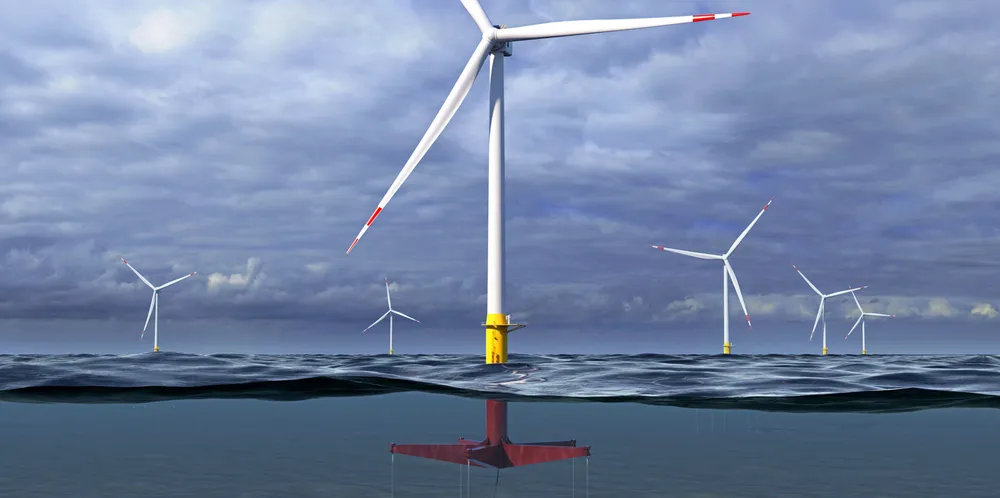GE floats new-look deepwater wind design on reborn Glosten tension leg platform
US giant's research lab unveils concept marrying 12MW Haliade-X and PelaStar foundation, in development via US government's Atlantis technology R&D programme

GE has pulled the curtain back on its design for a 12MW floating wind turbine based on a so-called tension-leg platform (TLP), being developed under a $4m US government technology R&D programme.
“Designing a floating turbine is like putting a bus on a tall pole, making it float and then stabilising it while it interacts with wind and waves. Doing this well is both a design and controls challenge,” said Rogier Blom, a senior principal engineer in model-based controls at GE and the project’s principal investigator.
“Through [this] project, we will be concurrently designing the controls system with the design of the floating structure itself to advance floating wind energy toward becoming a future commercially viable solution.”
The platform for new floating concept, being advanced under the US Department of Energy’s Atlantis (aerodynamic turbines lighter and afloat with nautical technologies and integrated servo-control) programme, uses give pairs of stiff steel tendons to moor the unit to seabed in water depths of 60 metres and more.
GE calculates the lighter-weight design could lead to a “very significant” reduction the levellised cost of energy (LCOE) of floating wind, noting “the core principle that makes this possible is co-designing the controls system with the tower and platform”.
“With GE’s Haliade X, we’re just beginning to tap into the future promise of offshore wind power in Europe, the US, and other parts of the globe,” Blom said.
“Today, these fixed-bottom wind turbines are limited [in the depth of water they can operate in]. With floating turbines, we would be able to dramatically expand the reaches of offshore wind power to areas with water depths of 60 meters or greater.”
Glosten vice president Ben Ackers said: “Collaborating closely with GE gives us another layer of detailed engineering design input beyond the standard drivers of site conditions, construction cost, schedule, and the resulting LCOE.
“This is the cooperation needed to bring floating wind to technical and commercial success.”
Calculus from the US’ National Renewable Energy Lab points to the introduction of floating turbines “dramatically expanding” the potential of the country’s offshore wind resources to more than 7,000TWh, nearly double the total annual US energy consumption of 4,000TWh.